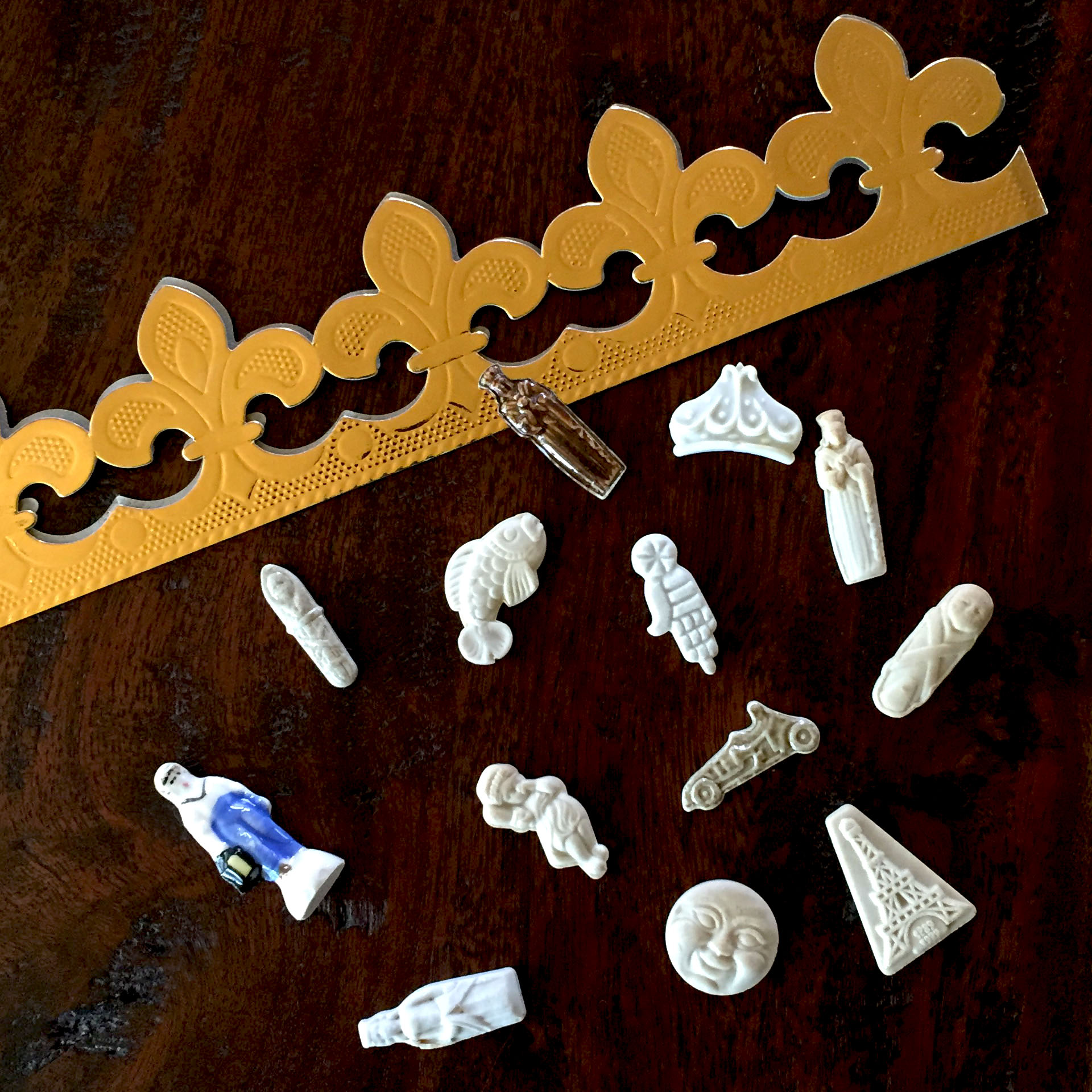A long time ago, the traditional galette des Rois was spiked with a dry bean, hence the name fève. When I was a young girl, the bean had already been replaced by a white porcelain baby Jesus. In the late Sixties, plastic supplanted porcelain and religious icons made way to secular symbols: the sun, a four-leaf clover, etc.
As galette season started to stretch to a whole month instead of a single week, bakers foresaw a new marketing opportunity: if fèves were perceived as collectibles, more cakes would be sold. It started will colorful ceramic santons (the Provençal figurines that populate nativity scenes) and expanded to depictions of cartoon characters, baby animals, classic cars, or even a real gold coin!
Fève collectors are known as fabophiles and often scout vide-greniers to enrich their collection. They can even compare their treasures to the 20,000+ samples exhibited at the Musée de la fève in Blain (Loire-Atlantique.)
Vocabulary
Galette des Rois: traditional cake served for the Epiphany
Vide-grenier: the French equivalent of a garage sale (literally, to empty one’s attic)

